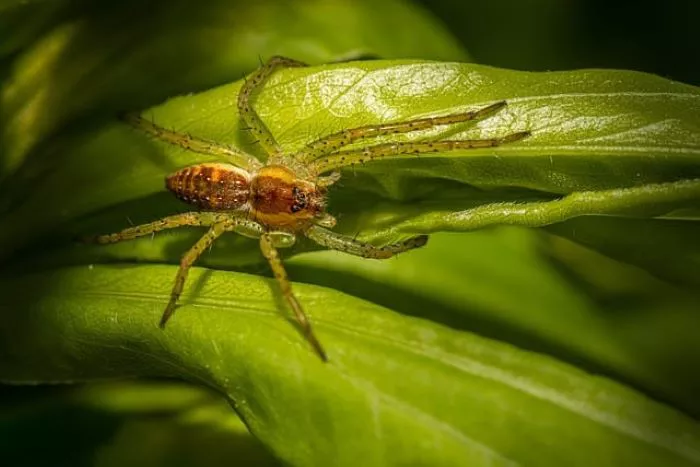Aphids are small, soft-bodied insects that can cause significant damage to rose plants. They feed on the sap of the plant, which can weaken the plant and lead to stunted growth, curled leaves, and reduced flowering. Aphids are particularly attracted to rose buds, where they can multiply quickly and create a serious infestation. This article will provide a professional perspective on how to effectively manage and eliminate aphids on rose buds.
Understanding Aphids
Aphids are tiny insects, usually measuring about 1/8 inch in length. They come in various colors, including green, black, brown, and yellow. These pests reproduce rapidly, often giving birth to live young without mating, which can lead to large populations in a short amount of time. Aphids are commonly found on new growth, including rose buds, where they can be particularly damaging.
These pests not only feed on the sap of the plant but also secrete a sticky substance known as honeydew. This honeydew can attract other pests, such as ants, and can lead to the growth of sooty mold, which can further harm the plant.
Identifying Aphid Infestations
Before taking action, it is essential to identify an aphid infestation. Look for the following signs on your rose buds and surrounding foliage:
Visible Aphids: Check the undersides of leaves and the buds themselves for clusters of small insects.
Distorted Growth: Aphid feeding can cause leaves to curl, become misshapen, or exhibit yellowing.
Sticky Residue: The presence of honeydew on leaves or the ground beneath the plant is a strong indicator of aphid activity.
Sooty Mold: This black, sooty substance can develop on leaves due to honeydew accumulation, indicating a significant aphid presence.
Cultural Control Methods
Preventing aphid infestations starts with good cultural practices. Here are some effective strategies to reduce the likelihood of aphids on rose buds:
Healthy Plants: Ensure your roses are healthy and well-maintained. Healthy plants are more resilient to pests and diseases. Provide adequate water, nutrients, and sunlight.
Companion Planting: Planting certain flowers and herbs near roses can deter aphids. Marigolds, for example, can repel aphids and attract beneficial insects.
Encourage Beneficial Insects: Ladybugs and lacewings are natural predators of aphids. By planting flowers that attract these beneficial insects, you can help control aphid populations.
Regular Inspections: Frequently check your rose plants for early signs of aphids. Early detection can make management much easier.
Physical Control Methods
If you notice aphids on your rose buds, physical control methods can be effective in managing the infestation:
Water Spray: A strong jet of water can dislodge aphids from the plant. Spray the affected areas, focusing on the undersides of leaves and the buds. Be cautious not to damage the plant in the process.
Hand Removal: For small infestations, you can remove aphids by hand. Wear gloves and gently squeeze or wipe them off the leaves and buds.
Sticky Traps: Place yellow sticky traps near your roses. These traps attract aphids and can help monitor and reduce their populations.
Chemical Control Methods
If cultural and physical methods do not effectively manage the aphid population, chemical control may be necessary. Always use chemicals as a last resort and follow the manufacturer’s instructions carefully.
Insecticidal Soap: Insecticidal soap is a safe and effective option for controlling aphids. It works by suffocating the insects. Spray the affected areas thoroughly, ensuring good coverage on both the tops and undersides of leaves.
Neem Oil: Neem oil is a natural pesticide derived from the seeds of the neem tree. It disrupts the life cycle of aphids and can help control their populations. Dilute neem oil according to the instructions and apply it to the affected areas.
Horticultural Oils: Similar to neem oil, horticultural oils can suffocate aphids. These oils can be effective when applied directly to the pests. Ensure that the product is suitable for use on roses.
Systemic Insecticides: If the infestation is severe, systemic insecticides may be necessary. These chemicals are absorbed by the plant and can kill aphids when they feed on the sap. Use these products with caution, as they can also affect beneficial insects.
Post-Treatment Care
After treating your roses for aphids, it is important to monitor the plants closely. Check for any signs of returning aphids or new infestations. Continue to encourage beneficial insects and maintain good cultural practices to prevent future outbreaks.
Regular Monitoring: Keep an eye on your roses for any signs of aphids or other pests. Early detection is key to effective management.
Maintain Plant Health: Continue to care for your roses by providing proper watering, fertilization, and pruning. Healthy plants are less susceptible to pests.
Adjust Cultural Practices: If you notice recurring aphid problems, consider adjusting your gardening practices. This might include changing companion plants or enhancing the habitat for beneficial insects.
Conclusion
Managing aphids on rose buds requires a combination of cultural, physical, and chemical control methods. By understanding the biology of aphids and employing effective management strategies, you can protect your roses from these damaging pests. Regular monitoring and maintaining plant health are crucial for preventing future infestations.
With careful attention and proactive measures, you can enjoy beautiful, healthy roses free from the threat of aphids. Embrace these best practices to ensure your rose garden thrives and remains a source of joy and beauty.


